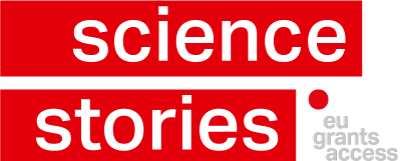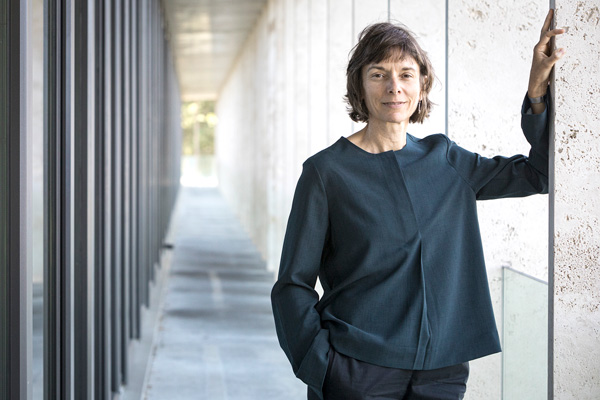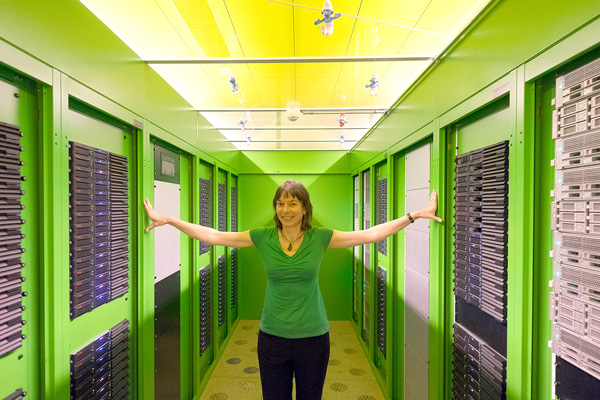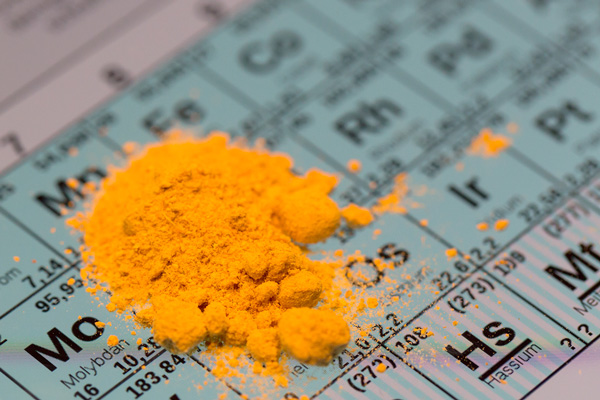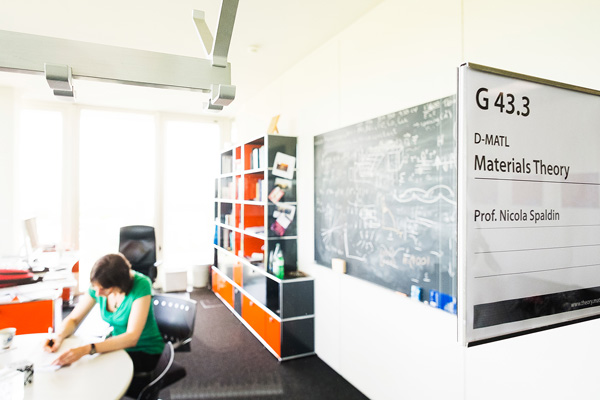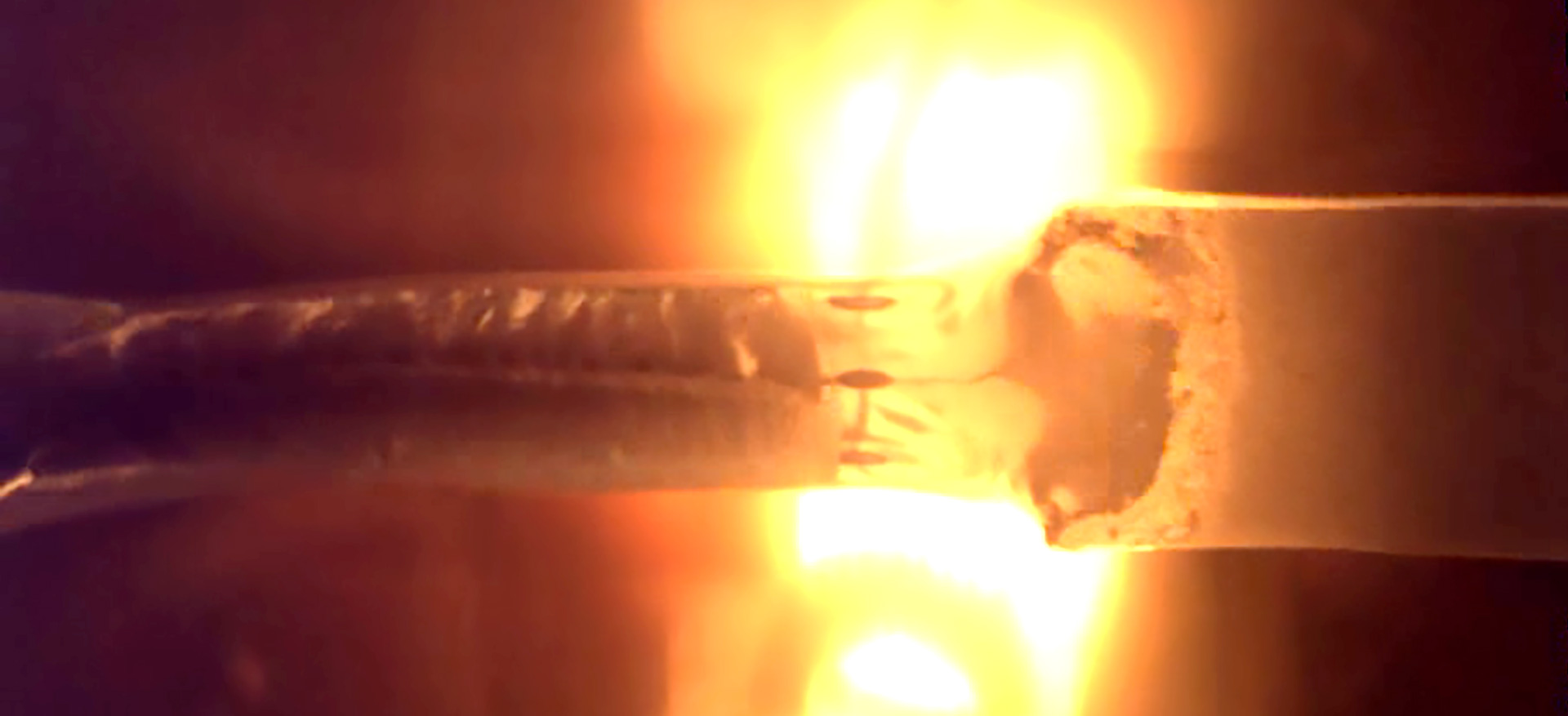
Searching for hidden order
How does she design materials with properties that don’t coexist? How does the ERC Synergy Grant help her to discover what is hidden? And how does she keep up research and teaching in times of corona? A meeting with Nicola Spaldin, Professor of Materials Theory at ETH Zurich.
«Ours is maybe one of the most COVID-19-compliant research areas», Nicola Spaldin says with a wink when I meet her on a Monday morning in January for our Zoom call. There is a good amount of British sense of humour in this statement as Nicola Spaldin has been working from home almost exclusively for nearly an entire year. Nonetheless, her research activities have not come to a halt, due to two main circumstances. One of them is the fact that she and her team work mainly with materials theory and are simulating their materials in the computer. The second one is the quick adaptation to the corona restrictions and the efficient organisation of the professor and her research group. I ask Nicola Spaldinabout her schedule for today and the rest of the week.
«First, we spend a lot of time
with pencil and paper
developing the physical
and chemical principles
behind the design.»
«Monday, I try to keep free of meetings for my own science, reading papers, working out new theories and writing. The rest of the week is dedicated to meetings via Zoom; one-on-one conversations with PhD students and other students, the weekly team meeting, discussions and conferences with research partners in Switzerland and abroad. At the beginning of the corona crisis my workdays lasted up to 16 hours because of the time differences, as many colleagues and cooperation partners work in the States or in China. By now, I try not to schedule more than four Zoom meetings per day, to try to avoid burnout and to reduce eye strain! But apart from the fact that all meetings are now taking place virtually our working method is not too different from before the pandemic.»
Besides her theoretical work Nicola Spaldin runs an experimental laboratory. How can she combine her work there with the current restrictions? «We were lucky. We have a specialist who conducts the experiments and works full time in the laboratory. This complies with ETH Zurich’s corona safety conditions as he is the only group member who needs to be in the lab. The rest of us can work almost exclusively from home so that we can leave space in the public transport and on campus for those who need to be on site for their experiments.»
This all sounds very rational. But are there things that Nicola Spaldin misses in her day-to-day life?
«Certainly. I miss the spontaneous contacts during coffee breaks, the encounters between meetings or at lunch, where you can exchange ideas or clarify issues within five minutes. And of course, I miss having a normal social life. However, I do not miss the constant travel to conferences and committees at all. Scientific conferences are still held virtually and work very well in terms of knowledge exchange. But for young researchers at the beginning of their careers this situation is difficult. Under normal circumstances the international conferences offer them platforms to establish their professional contacts and networks. Currently, this is not happening at all.»
Multiferroics – combining allegedly incompatible functionalities
20 years ago, as a young postdoc at Yale University, Nicola Spaldin fortuitously came across the research topic she has been driven by ever since: the production of multiferroics – of materials that combine two properties that do not tend to co-exist. Materials are either ferromagnetic and have magnetic dipoles of north and south poles. Or they are ferroelectric and have negative and positive charges that make electric dipoles. Materials having both functionalities are not found naturally, at least not in a form that could be used technologically. But there is a strong technological driver for developing such materials. Today, the storage of data is based on ferromagnetic materials that are controlled by electric currents, which require bulky components and use a lot of energy. If scientists succeeded in producing multiferroic materials that combine ferromagnetism and ferroelectricity, the ferromagnetism could be controlled using electric fields, which are energy efficient, small and light. This would be a technological revolution. Computers could work faster and would need less energy. Nicola Spaldin and her group are trying to design and manufacture such multiferroic materials. What is their approach?
«Occasionally, we accidentally
discover things we were
not looking for.»
«First, we spend a lot of time with pencil and paper developing the physical and chemical principles behind the design. We think about which atoms from the periodic system could be combined and where they should be positioned within the structure of the material. Then we use high-performance computers to calculate the properties of our designer structures. If the material looks promising in the computer, we try to make a sample in the laboratory. Often, the calculations already indicate that it won’t work. However, this is a success in a sense because it tells us that we did not understand the theory properly. Sometimes, the calculations indicate good properties but the material cannot be made in the lab or turns out not to have the properties we expect. And occasionally, we accidentally discover things we were not looking for. I have this nice example: we had created a design for a multiferroic that functioned perfectly in our simulations. But it did not work in the lab as expected because the atoms could not be placed where we wanted them to be. Instead, the material we had invented turned out to be a beautiful deep blue color. Our collaboration partner at that time, a colleague from the Oregon State University who synthesised the material during this project, then started a collaboration with a paint manufacturer to develop much more eco-friendly synthetic blue pigments.»
There are billions of electrons within the materials that Nicola Spaldin is working with, and each electron interacts with all of the others. While the interaction between any two individual electrons can be calculated, because the physical laws that describe the interaction are known, the complexity resulting from billions of interacting electrons leads to new exotic properties that are not understood. «We can measure the average behaviour of the electrons. The great challenge, however, is to find out what such a measurement tells us about the hidden behaviour of the individual electrons», Nicola Spaldin explains. This is the goal of the ERC Synergy Grant which she received in 2019 together with colleagues from ETH Zurich and the Paul Scherrer Institute (PSI) as well as from ETH Lausanne and the Nordic Institute for Theoretical Physics (NORDITA) in Stockholm.
HERO unveils hidden properties
In their joint ERC research project called HERO (HERO – Hidden Entangled and Resonating Orders) the materials theorist and the three physicists look for the hidden characteristics of crystalline solids that cannot be made visible using existing experimental methods. Within the HERO Project, Nicola Spaldin extends her research field of multiferroics in a new direction, which she describes as follows:
«We are looking for what is called hidden order. An example would be materials that are neither ferromagnetic nor ferroelectric but that anyway react when we apply an electric or magnetic field to them. The response to the field indicates that there must be a hidden order with ferromagnetic or ferroelectric characteristics caused by some exotic quantum mechanical process within the material, and our goal is to find the right measurement to reveal that order.»
The HERO quartet, consisting of the photon science researcher Gabriel Aeppli (PSI/ETH Zurich), neutron scientist Henrik Rønnow (EPFL), theoretical physicist Alexander Balatsky (NORDITA) and the materials theorist Nicola Spaldin (ETH Zurich), is well poised for this search. The technologically and conceptually highly challenging measurements are conducted in the major research facilities of the PSI in Villigen. The electronic evaluation of the data is performed on the supercomputers at the Swiss National Supercomputing Centre CSCS in Lugano and on the Euler supercomputer of ETH Zurich.
« I hope to use my position
to advocate for Switzerland’s
participation in the Horizon Europe
programme.»
I ask Nicola Spaldin about the results she expects from the HERO Project and she replies: «It is our goal to understand the complex interactions between the many electrons well enough to be able to make precise predictions about their behaviour. We will then be able to reliably design and make materials with exactly the properties that we want. Today, we can already do this but only to a very limited extent. With such an understanding, maybe one day even our dream of achieving a superconductor working at room temperature could become real. But what we do at present is pure basic research.» And Nicola Spaldin illustrates how long it may take from the first discovery of a hidden phenomenon to its technical application using the example of another material property, antiferromagnetism: «The first hints of antiferromagnetic behaviour became evident in an experiment in the 1930s. The measurements delivered inexplicable results, and the French physicist Louis Néel subsequently developed a theory of antiferromagnetism which was consistent with the measured observations. However, there was no specific proof at the time that his theory was correct. During the 1950s, the American physicist Clifford Shull succeeded in accurately measuring the phenomenon und in 1970 Louis Néel received the Nobel Prize for his fundamental work and discoveries concerning antiferromagnetism. The first large-scale technological implementation did not happen until the late 1990s however: Today, almost every commercially available magnetic sensor, which is a multi-billion-dollar industry, contains an antiferromagnet. Our current state of research is where researchers stood in the 1930s in terms of antiferromagnetism. Right now, we have no idea what our results will one day be useful for. Maybe we will not even live to see it.»
Supporting the European Research Community
Nicola Spaldin is an internationally renowned elite researcher. This is seen in the numerous awards she has received over the past years, and also in her appointment by the European Commission as a member of the Scientific Council of the European Research Council (ERC). In this function Nicola Spaldin will substantially influence the European Union’s research funding in the next four years. What does she hope to accomplish?
«One of the key tasks of the Scientific Council, in my view, is to show to politicians, the media and the public the importance of basic research that is triggered by scientific curiosity. What is more, the Scientific Council is the Board of Directors of the ERC. As Scientific Councillors, we decide on new programmes for research funding and other important topics, such as the organisation and quality assurance of the evaluation processes. And of course I hope to use my position to highlight the enormous significance of international scientific collaboration and to advocate for Switzerland’s participation in the Horizon Europe programme.»
By now, it is already half past ten. Before she returns to her work from home, I ask Nicola Spaldin about her schedule for the upcoming days and weeks. «I started to read the work of one of my students this morning and will now finish this paper. And I have several papers I would like to write myself in the weeks to come, as well as the collaborations with my doctoral students and postdoctoral researchers. Then lectures start again at the end of February; via Zoom, of course.»She then adds, just before signing out of our meeting, with a laugh: «Yes, and I do hope to finally get that corona vaccination!»
Nicola Spaldin
Nicola Spaldin studied at Cambridge University, where she earned a B.A. in Natural Sciences in 1991. She then obtained her PhD in Chemistry in 1996 from the University of California, Berkeley. She next worked as a postdoctoral researcher in the Applied Physics Department at Yale University, before moving back to California, where she was Assistant Professor (1997-2002), Associate Professor (2002-2006) and Full Professor (2006-2010) in the University of California Santa Barbara's Materials Department. In 2010, she was appointed Full Professor of Materials Theory at ETH Zurich. Since 1 January 2021, Nicola Spaldin has been a member of the Scientific Council of the European Research Council, ERC.
Nicola Spaldin has received numerous academic accolades for her works, among them the Rössler Prize (2012) awarded by the ETH Zurich Foundation, the Körber European Science Prize (2015), the L’Oréal-UNESCO For Women in Science International Award (2017) and the Swiss Science Prize Marcel Benoist (2019).
Horizon 2020 Project
HERO: Hidden Entangled and Resonating Orders
- Programme: ERC Synergy Grant (4 partners)
- Duration: 1 May 2019 – 30 April 2025 (72 months)
- Contribution for University of Zurich: 2’499’999 €
